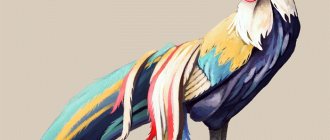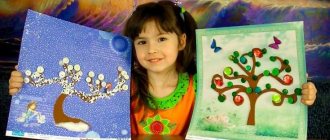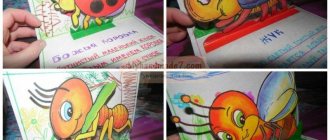Autumn underwater
You swim and undress, and I swim and get dressed. I put on warm underwear, warm trousers and a warm jacket. I put woolen socks on my feet and woolen gloves on my hands.
On top of everything is a rubber suit.
Mask on your face, fins on your feet, and into the water.
You swim in the summer, and I swim in late autumn. I look at how autumn is under water.
It's cold in the autumn in the underwater forest. A furious wind drives angry waves above. Yellow reeds bend over the water, as if looking into the depths.
And deep down everything is in motion. Drowned leaves squirm along the bottom. Mossy reeds sway. The swollen driftwood logs roll from side to side like piglets.
There is a high blue sky above the lake. There are burning candles on the banks of the birch tree. Black strict spruces. Trembling red aspen trees. Gold autumn.
But in the underwater forest there is no golden autumn. Autumn under water is always gloomy. Your face is freezing from the water. The leaves don't rustle, the wind doesn't whistle. The surrounding area is deserted and deaf.
The algae branches broke, drooped, and drooped. Everything faded and became covered with a thick layer of turbidity.
The fast shiny fish don't play. The fish sank into the dark depths. The frogs huddled together and buried themselves in the thick mud. Some green-eyed pike quickly leave, raising mud with their tails. Long thin algae move like lazy sleepy snakes...
The earth will soon be covered with snow - a white winter will come. And the water will be covered with ice. And under the water there will come a long night - a black winter. Both on land and under water, everyone will eagerly await the arrival of green spring.
Who lives at the bottom of the ocean? fairy tale for children
At the bottom of a huge ocean lived a large emerald turtle.
She was so old that she didn’t even remember how old she was. The Turtle wore a crown of precious stones on her head and considered herself a queen. Who knows, maybe she was actually born into a royal family and was the heir to the royal throne. One way or another, now no one knew who ruled the kingdom at the bottom of the ocean before her. After all, there was no one older than the emerald Turtle for many miles around in the ocean. All the Turtle's children had long since moved to live in other seas and oceans, and only the young Turtle, still a baby, lived next to her in her royal house. And this house was truly magnificent. Everything around was shining and sparkling. Decorations made from colored corals and ocean algae, mother-of-pearl shells and pearl necklaces were hung throughout the palace. The queen slept on a bed of the softest seaweed, and even the sand on the bottom of the ocean here was not simple, but collected from the smallest grains of sand. The old Turtle slept almost all the time. But the palace was not empty. Hundreds of royal servants were ready to carry out any of her instructions. Hordes of sea spiders and crabs, armed with hard, impenetrable shells, protected the royal palace from all sides. Giant octopuses stood guard at the gates of the palace and were ready to repel any enemy attack. And in the palace itself there were many servants. Multi-colored cuttlefish instantly adapted to the mood of their mistress. Changing color like real chameleons, they were ready to carry out any order of Her Majesty the Queen. The squids helped them, because with their strong tentacles they could do anything. A dance group of small king prawns staged performances to the music of long-whiskered prawns, and beautiful mother-of-pearl shells served as musical instruments. In the evenings, the queen herself put the little Turtle to bed and read him fairy tales. But the Turtle had already heard all his grandmother’s fairy tales, he wanted to learn something new. And then the old Turtle ordered the largest giant Octopus to catch someone in the ocean and bring him to her kingdom. So the queen hoped to get new fairy tales, which, of course, the ocean inhabitants know and tell to their children. – People consider dolphins to be the smartest. These sea animals probably keep in their memory many fabulous stories about the ocean,” said the Turtle and sent the octopus on a hunt. Soon the octopus brought the Dolphin and put him in a cage. – Do you know ancient ocean legends and epics? Has anyone told them to you? - asked the Turtle. – If you remember five such stories and tell me, I will let you go. Poor Dolphin did not know five stories; he only remembered three tales about the ocean. But the Turtle got angry and didn’t want to let him go. The octopus, knowing that the Dolphin could not remain at the bottom of the ocean for a long time without air, that he could die, told the queen about this. “Let him think and remember two more stories, then you will let him go,” the old Turtle yawned and went to bed. Baby Turtle heard all this and, as soon as Grandma Turtle fell asleep, he said to the octopus: “Let go of the Dolphin.” I don't want him to die. I will come up with two stories myself and tell them to the queen. This is how little Turtle saved the dolphin from death. In parting, he said to the dolphin: “Please forgive my grandmother for her evil deed.” Live long, long life. I love you. Goodbye! - Thank you, my young friend! - Dolphin answered. - I owe you. If you need help, call me and I will come. And he swam away. From then on, Turtle no longer listened to grandma's stories before bed. The baby grew up and became independent. Often he swam away from Grandma Turtle's underwater kingdom to get to know the big ocean house better. One day, after a tiring swim, the Turtle was very cold and fell ill. The whole kingdom treated him with herbal infusions, but the Turtle could not get better. Then the Octopus said: “I know where your friend Dolphin lives, and I will swim to him for advice.” Maybe he will help you get better. The octopus found the Dolphin, and he, having learned about the Turtle's misfortune, brought him the best medicine of his family. The dolphin's grandmother treated him with this medicine when he was little. Soon the Turtle recovered. And now not only he, but also Queen Turtle was very grateful to Dolphin and his family for their help. She apologized to the dolphin for a long time for her evil and thoughtless act. This is how seemingly completely different families - the Turtle and Dolphin queens - were able to become friends. This happens often in life. We find new, very kind and loyal friends where we don’t expect to find them at all. Source
Underwater urchins
In the ruff, as in the hedgehog, the most noticeable thing is the spines.
Head, tail, spines in the middle - that's the whole ruff.
And also the eyes: lilac-blue, large, like a frog’s.
Ruff is as tall as a little finger. And if it’s the size of an index finger, then he’s already a ruff old man.
These old men scared me. I swim and see: the bottom is moving! It stirred and stared at me with points of dark eyes.
These are ruffs - old man to old man! They themselves are invisible: tails, heads, spines - everything is as spotted as the bottom. Only eyes are visible. I hung over the ruffs, my fins dangling.
The ruffs became wary. The timid ones suddenly began to fall to the bottom, bend over and deliberately raise clouds of turbidity.
And the angry and brave ruffled the thorns on their humps - don’t come near them!
Like a hawk above the sparrows, I began to circle over the flock of ruff.
The ruffs waited.
I began to wheeze into the breathing tube.
The ruffs were not afraid.
I widened my eyes - at least they didn’t care!
Then I... almost said: “I spat on the ruffs”... No, I didn’t spit, you can’t spit under water, but I waved my flipper at the ruffs and swam away.
No such luck!
A sharp swing of the fin caused mud to rise and swirl from the bottom. All the ruffs rushed to her: after all, delicious worms and larvae rose from the bottom along with the mud!
The faster I worked with my fins, in a hurry to swim away, the more silt I lifted from the bottom.
Clouds of silt swirled behind me like dark storm clouds. Behind the clouds were flocks of ruffs.
The ruffs only lagged behind when I swam to the depths. But at the depths I felt uneasy. I was not yet accustomed to the depth - these were still my first steps under water.
The bottom sank deeper and deeper. And it seemed to me that I was flying above the ground and soaring higher and higher. I just wanted to grab onto something so as not to fall from such a height!
I turned back.
It's overgrown again. There are ruffs in the thickets. It seems more fun: all living souls!
Little fingered ruffs swim in the middle of the water, and old men swim at the bottom. Now I deliberately raised the mud with my flippers. “Old men” and “little fingers,” like sparrows on millet, rushed at her.
I no longer scare the ruffs: I don’t wheeze into the phone, I don’t stare at them.
Just looking.
And therefore, even the most timid no longer fall on their sides to pick up the mud from the bottom and hide in it. And the angriest ones don’t have thorns on their humps.
Flexible guys. The spines in the ruffs, although the most noticeable thing, are not the most important thing!
Under the water
In the underwater world, everything is different from what we have on earth.
You need to move there not standing, but lying down. It is very difficult to walk there, but easy to fly. And you can even jump upside down there.
Arms and legs in this world become a third shorter, and fish, shells and algae become a third longer than their height. Water flattens distances and enlarges objects.
There is never rain or snow in the underwater world. There are not stars or clouds in the sky, but waves. Air bubbles roll between the waves - shiny, like stars!
In winter it’s not white, but black: it’s an impenetrable night all winter.
There is no horizon - the line where the earth meets the sky.
There are no cheerful sunbeams galloping across the land of the underwater world. Wide ribbons of sunlight sway there - reflections of the waves and the sun. Purple shadows from red bushes lie on the unsteady gray ground. A soft green haze covered everything around - there are no sharp shadows or sharp corners.
Everything is wrong, illusory and mysterious.
Everything is not the same as here on earth.
* * *
I could hardly wait for summer: I was so impatient to go under the water and see the fish.
Our lake fish are not a curiosity. Ruffs, roaches, perches, pikes - who hasn’t held them in their hands?
But it’s one thing to have a fish in your hand, and another thing to have it in the water. The fish is at home in the water, that’s where it lives. And the fish in your hand collapses and dies.
A dead fish even has a lifeless, faded color.
Fishermen say that dead fish wither.
Or maybe the fish are alive! Bright, fast, frisky.
Who doesn’t want to look at these!
I put a diving mask on my face.
He put his feet into rubber fins.
I began to look like a one-eyed frog. And, like a frog, he dived into the water.
Fifth name
Roaches are just like swallows: slender, fast, restless. But they don’t look like swallows in color.
In the water, roaches appear gray, and fishermen sometimes call them seryanki for this. Or rudds - for their red fins.
Roaches are always on the move. Either they dart like gray shadows between the algae, or they suddenly shoot up and flash like sunbeams. Because of this shine, the roach is also called the silver roach.
The roach also has one more name - the fourth. Somehow I made my way through the thickets and swam out into an underwater clearing. The clearing is empty. Some bubbles, like white moths, flew up.
And suddenly red sparks swirled around me!
I even shuddered - my eyes!
Red, shiny, like lights.
You can’t swim past such eyes, you’ll stop: not eyes, but real brake lights!
Because of its red eyes, many fishermen call the roach red-eyed.
How many names does the roach have: seryanka, rudd, silverfish, red-eye! And everyone is good.
But if it were up to me, I would give the roaches a fifth name - water swallow. They are very playful and dexterous. And the tail is like a swallow’s, with a fork.
Fish dances
Before sunrise, a purple cloud with a fiery rim hung over the horizon. The sun rose crimson, and everything - the earth and the sky - turned red. I am sitting under a willow bush with narrow red leaves. Ducks are whistling their wings overhead, and their wings are pink.
An extraordinary sunrise!
Red waves are crushed in the red river. Scarlet clouds of steam move above the wave.
Black seagulls screaming and rushing overhead, like a black crow above the glow of a fire. As if burned, they twist their wings and fall into the burning river, splashing out sheaves of sparks.
The seagulls are getting closer, their cries are getting louder.
And suddenly black fish began to jump out of the red waves. Narrow, like willow leaves. They fly out standing up and, standing up, tail down, fall into the red water. A whole joint flew out and scattered like a fan. Here it is again: one by one, one by one.
Fish dancing!
I look with all my eyes.
Could it be that the fish’s blood also flared up on this amazing red morning?
And in the middle of the river, in the commotion of the waves, two black specks are moving: a smaller speck and a larger speck. A flat head and a hump-like back stick out from the water. Otter! She dived as if she had melted, and fish immediately jumped out of the water and danced: up and down, up and down!
The seagulls saw it and fell, breaking their wings. They began to catch fish right on the fly.
Everything immediately became normal.
The sun rose, and the black seagulls turned white, the black fish turned silver, the red water turned gray. The purple cloud on the horizon moved and melted.
The predators—gulls and an otter—followed the dancing fish and disappeared around a bend in the river.
And I lay by the snag and wrote down what I saw. He started writing on a red piece of paper and ended up writing on a gold one.
The most popular types of sea fish
The second largest group of marine inhabitants includes the following species:
- Cod (blue whiting, cod, navaga, hake, pollock, pollock and others).
- Mackerel (mackerel, tuna, mackerel and other fish).
- Flounder (flounder, halibut, dexist, embassicht, etc.).
- Herring (Atlantic menhaden, Atlantic herring, Baltic herring, Pacific herring, European sardine, European sprat).
- Garfish (garfish, medaka, saury, etc.).
- Sea sharks.
The first species lives in the seas of the Atlantic Ocean, comfortable conditions for them are 0 ˚ C. Its main external difference is the mustache on its chin. They live mainly on the bottom, feeding on plankton, but there are also predatory species. Cod is the most numerous representative of this subspecies. It reproduces in large numbers - about 9 million eggs per spawning. It is of great commercial importance, since meat and liver have a high fat content. Pollock is a long-lived member of the cod family (lives 16 - 20 years). It lives in cold waters and is a semi-deep-sea fish. Pollock is caught everywhere.
Mackerels do not lead a bottom-dwelling lifestyle. Their meat is valued for its high nutritional value, fat content and a large amount of vitamins.
In flounders, the eyes are located on one side of the head: right or left. They have symmetrical fins and a flattened body.
Herring fish are pioneers among commercial fish. Distinctive features are no or very small teeth, and almost all lack scales.
Sargan-like fish are elongated in shape with long, sometimes asymmetrical jaws.
The shark is one of the largest marine predators. The whale shark is the only one that feeds on plankton. The unique abilities of sharks are smell and hearing. They can smell a smell from several hundred kilometers away, and their inner ear is capable of detecting ultrasound. The shark's powerful weapon is its sharp teeth, with which it tears the victim's body into pieces. One of the main misconceptions is the idea that all sharks are dangerous to humans. Only 4 species pose a danger to people - bull shark, white shark, tiger shark, and whitetip shark.
Moray eels are marine predators from the eel family, whose bodies are covered with poisonous mucus. Outwardly they are very similar to snakes. They practically cannot see, they navigate in space by smell.







